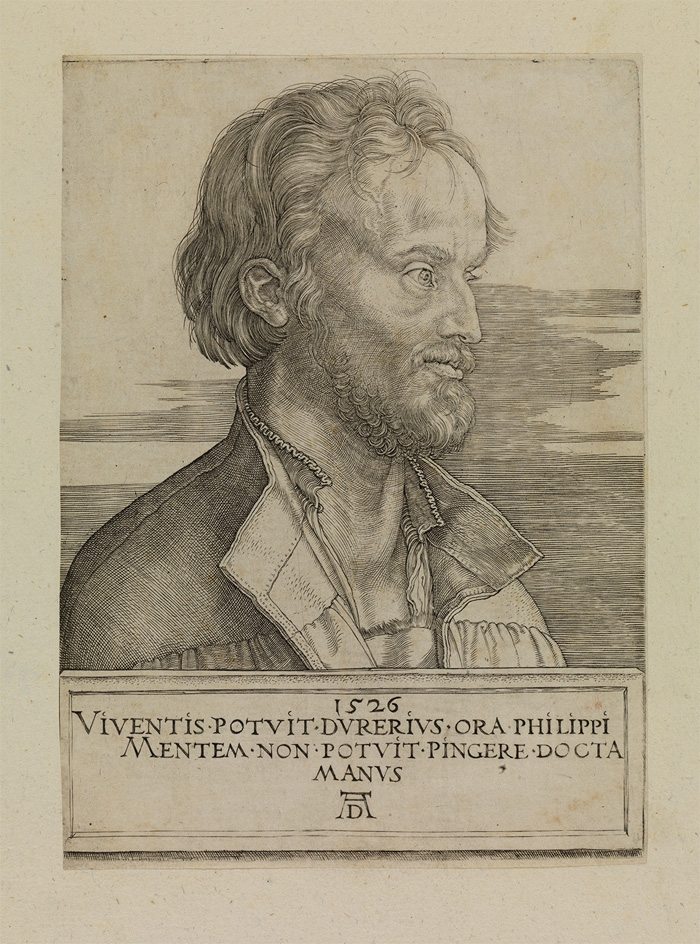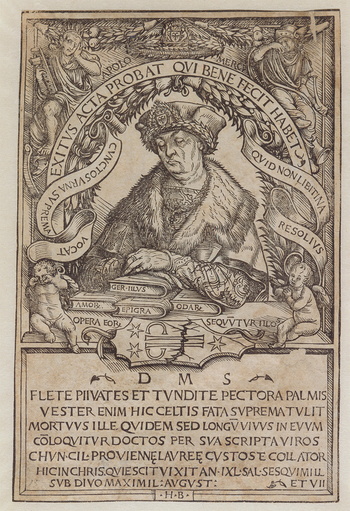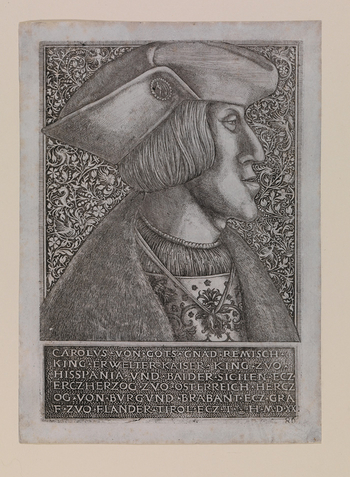Digital portrait index
Portrait Prints of the Early Modern Period
Project duration: 2009 – 2013
Project sponsorship: Deutsche Forschungsgemeinschaft (DFG)
In 2009, under the general management of the photo archive Foto Marburg, well-known museums and libraries in Germany and Austria started the digitisation and database-assisted collecting of portrait prints from 1450 to 1850.
It is expected that until mid-2013, a continuous, web-based, open-access union catalogue with more than 260,000 portraits from numerous European countries will be published. Of these, 150,000 high resolution images and access data are already online (www.Portraitindex.de). The Department of Prints and Drawings (Graphische Sammlung) of the Germanisches Nationalmuseum contributes 20,000 sheets from its collection of 60,000 portraits to the index, chosen from its outstanding holdings of 15th-, 16th-, and 17th-century portraits as well as sheets from the Collection Paul Wolfgang Merkel, containing the well-known group of Nuremberg portraits by Georg Wolfgang Panzer.
The Significance of the Portrait Print
The portrait is one of the most important artistic genres. The visualisation of the portrayed not only recalls the actual person but mirrors the social, political and economic circumstances of his/her time, offering a key to the understanding of an era and its social developments: it informs us about the sitters, their professions or institutions, their social status, attitudes and cultural norms, representational needs and entitlements. At the same time, the portrait could serve as legitimation or defamation of the sitter. With their large print runs and wide distribution, prints, in the form of woodcuts, copper engravings, etchings or lithographs, were especially accomodating towards the versatile role of the portrait and its impact. This included the mediation of new pictorial formulae as well as passing on old traditions, the successful interconnectedness of artists, publishers and printers and, not least, the transfer of ideas throughout Europe.
The Digital Portrait Index as Research Tool
The Digital Portrait Index processes systematically catalogued portrait prints, for the most part published for the first time, from over four centuries of European provenance. As such it provides an important tool for the interested public and interdisciplinary research, such as art and cultural studies, genealogy, event history and sociology. Collaboration with the German National Library (Deutsche Nationalbibliothek), Frankfurt/Main, significantly contributes to the efficiency of the database, facilitating the linking of the portrait prints with the controlled vocabulary of the Name Authority File (Personennamendatei, PND). Since this file may contain name variants for one person, the user can search the Portrait Index under synonymic name forms as well as multilingually. Furthermore, in-depth information about the persons portrayed may be gained via weblinks, such as the online encyclopedia Wikipedia and the online portal of the nationalbiography (Deutsche Biographie).
Responsible
Dr. Yasmin Doosry
Partner
Staatsbibliothek zu Berlin - Preußischer Kulturbesitz
Deutsche Nationalbibliothek, Frankfurt am Main
Staatliche Graphische Sammlung München
Universität Leipzig, Universitätsbibliothek
Philipps-Universität Marburg,
Deutsches Dokumentationszentrum für Kunstgeschichte - Bildarchiv Foto Marburg
LWL-Landesmuseum für Kunst- und Kulturgeschichte, Münster
Further Objects

Information and Services
Plan Your Visit
Opening Times
Location and Approach
GNM Museum Shop
FAQ
Library
Branches
Contact



